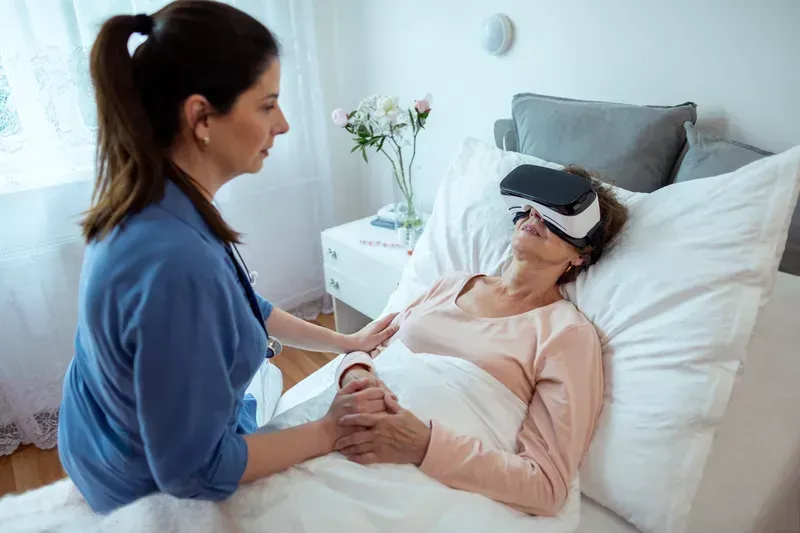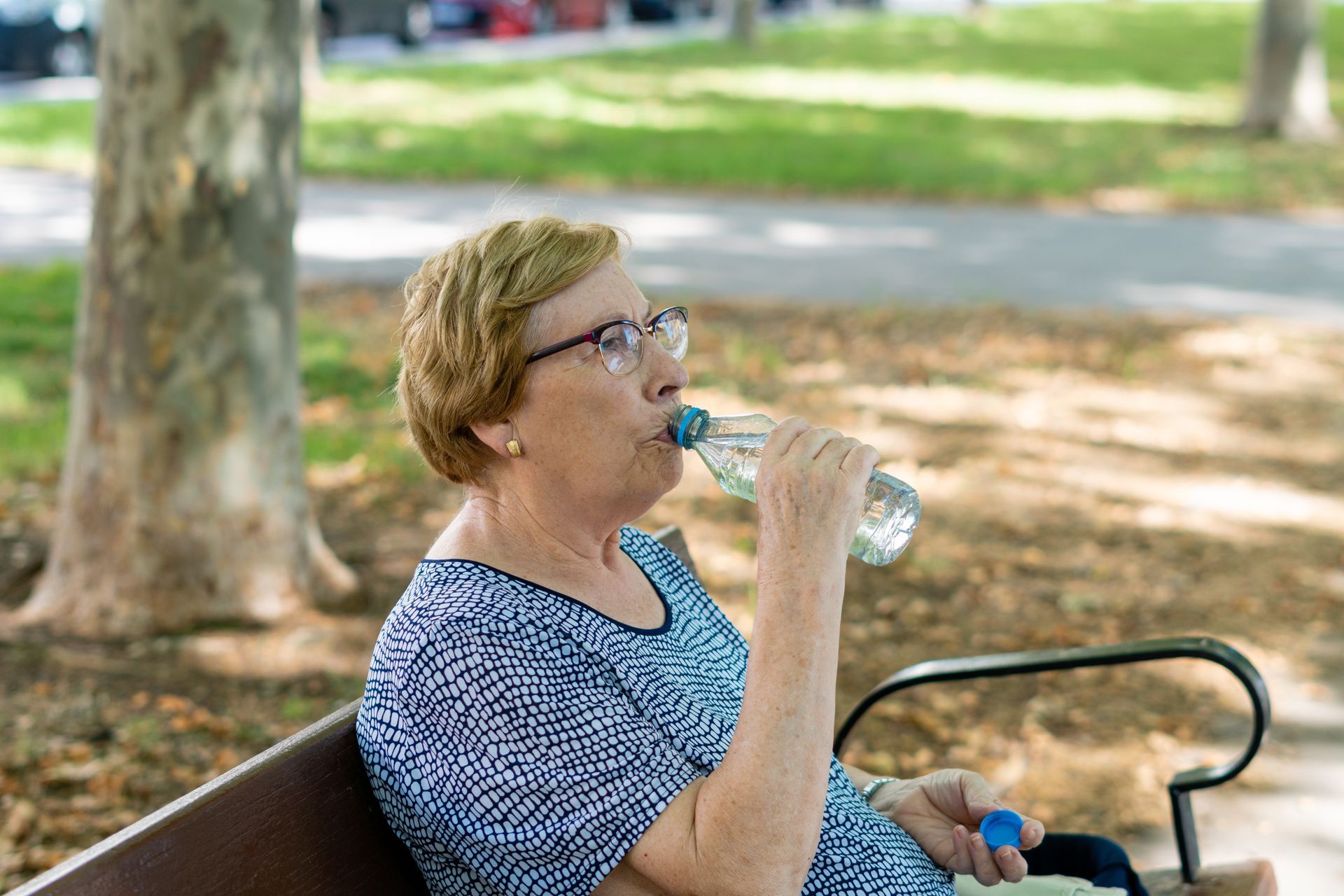BLOG
Addressing Sensory Processing Issues in Seniors with Dementia
How do sensory processing issues affect seniors with dementia? Sensory processing issues are prevalent among dementia patients and significantly impact their daily lives. These challenges can lead to increased agitation, confusion, and a decline in overall well-being. Understanding and addressing these issues through effective environmental modifications is crucial for enhancing the quality of life for seniors with dementia.
The Overlooked Challenge of Sensory Processing in Seniors with Dementia
Sensory processing disorders in seniors with dementia often go unnoticed, yet they play a significant role in the daily challenges these individuals face. These disorders manifest as difficulties in processing and responding to sensory information, such as sounds, lights, and textures. For instance, a senior with dementia might find background noise overwhelming or become disoriented by changes in lighting. These sensory disruptions can lead to increased anxiety, agitation, and even physical discomfort.

Common symptoms of sensory processing issues in dementia patients include hypersensitivity to stimuli, difficulty with spatial orientation, and impaired balance. These symptoms can make routine activities, such as eating or dressing, particularly challenging. For example, a senior might struggle to differentiate between food items on a plate due to visual processing issues, leading to frustration and decreased appetite. Similarly, tactile sensitivities can make wearing certain fabrics uncomfortable, affecting their overall comfort and mood.
The Role of Environmental Modifications
Creating dementia-friendly environments is crucial for mitigating the sensory processing issues faced by seniors with dementia. Simple yet effective modifications can significantly reduce sensory overload and enhance comfort. For instance, adjusting lighting to minimize glare and shadows can help prevent disorientation and agitation. Soft, even lighting creates a calming atmosphere, making it easier for seniors to navigate their surroundings.
Noise reduction is another essential modification. Background noise can be particularly distressing for individuals with dementia, leading to confusion and anxiety. Implementing sound-absorbing materials, such as carpets and curtains, can help dampen noise levels. Additionally, using white noise machines or playing soft, soothing music can create a more serene environment, promoting relaxation and reducing stress.
Tactile-friendly furniture also plays a vital role in creating a supportive environment. Seniors with dementia often have heightened sensitivities to textures, making certain materials uncomfortable. Opting for soft, smooth fabrics and avoiding rough or abrasive surfaces can enhance their physical comfort. Ergonomically designed furniture that supports proper posture and movement can improve their overall well-being.
Implementing Sensory-Friendly Activities for Seniors with Dementia
Engaging seniors with dementia in sensory-friendly activities can significantly enhance their quality of life. Music therapy, for instance, has proven to be highly effective. Playing familiar tunes can evoke positive memories and emotions, providing comfort and reducing anxiety. Additionally, rhythmic activities like drumming or clapping along to music can improve motor skills and coordination.
Aromatherapy is another valuable tool. Certain scents, such as lavender and chamomile, have calming effects that can help reduce agitation and promote relaxation. Diffusing these essential oils in living spaces or incorporating them into massage routines can create a soothing environment. It's critical to use scents that are familiar and pleasant to the individual to avoid any adverse reactions.
Tactile stimulation activities also offer significant benefits. Providing seniors with dementia with various textured objects, such as soft blankets, smooth stones, or textured balls, can help them stay engaged and focused. These activities can improve sensory processing and provide comfort and security. Additionally, incorporating activities like gardening, which involves touching soil and plants, can be therapeutic and enjoyable.
Case Studies of Effective Environmental Changes
Real-world examples of environmental modifications in assisted living facilities highlight the tangible benefits of these changes. At Green Meadows Assisted Living, introducing soft, ambient lighting and noise-canceling materials led to a noticeable reduction in resident agitation. Care specialists reported a 25% decrease in incidents of restlessness and a marked improvement in overall mood among residents.
Another successful case comes from Harmony Haven Memory Care. Here, the facility implemented tactile-friendly furniture and sensory gardens. Residents were provided soft, ergonomic chairs and access to a garden filled with various textured plants and flowers. Feedback from caregivers indicated that these changes enhanced physical comfort and encouraged more outdoor activities, leading to increased social interaction and physical exercise.
Future Directions in Sensory Processing and Dementia Care
Emerging trends and innovations in dementia care pave the way for more effective management of sensory processing issues. One promising development is the use of virtual reality (VR) technology. VR can create immersive, calming environments that help reduce anxiety and agitation in seniors with dementia. For example, VR headsets can transport users to serene landscapes or familiar places, providing comfort and familiarity.

Another exciting advancement is the integration of smart home technology. Devices such as intelligent lighting systems and voice-activated assistants can be programmed to adjust the environment based on the individual's needs. For instance, bright lights can gradually dim in the evening to mimic natural sunset, promoting better sleep patterns. Voice-activated assistants can provide reminders and play soothing music, enhancing daily routines and reducing stress.
Recent research also highlights the potential of multisensory rooms, or "Snoezelen" rooms, in dementia care. These specially designed spaces combine lights, sounds, textures, and scents to create a therapeutic environment. Studies have shown that multisensory rooms can improve mood, reduce agitation, and enhance cognitive function in dementia patients. Facilities that have implemented these rooms report positive feedback from residents and caregivers.
Conclusion
Addressing sensory processing issues is crucial for improving the quality of life for seniors with dementia. Real-world examples and emerging technologies further demonstrate the positive impact of these strategies. Contact Assured Senior Living today to learn how our personalized care can enhance the well-being of your loved ones.














